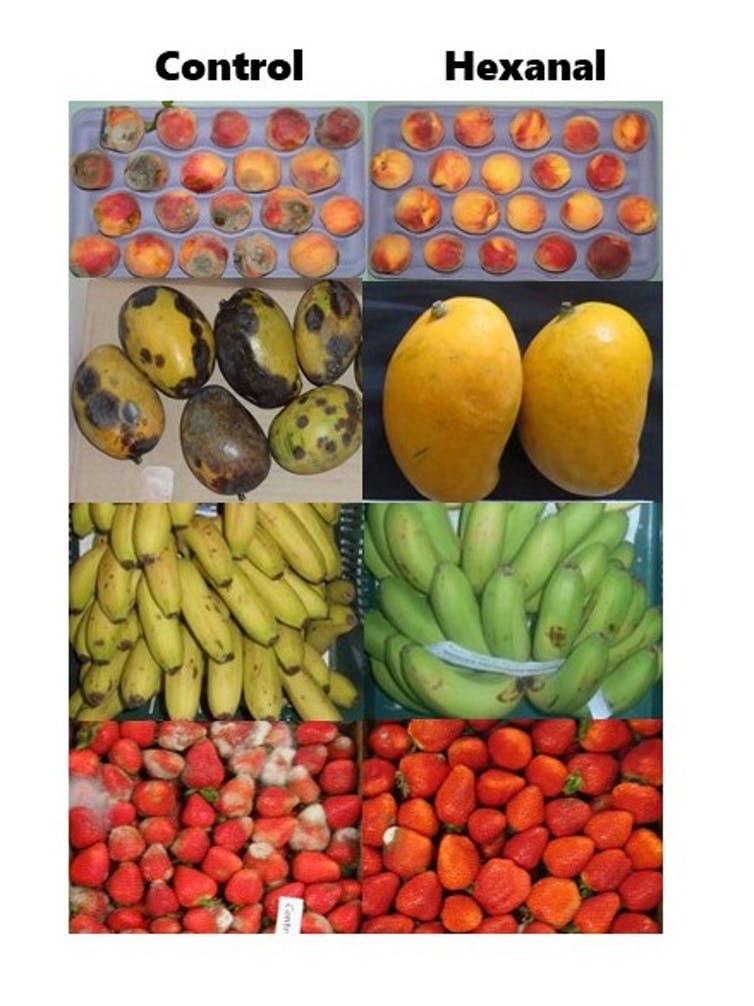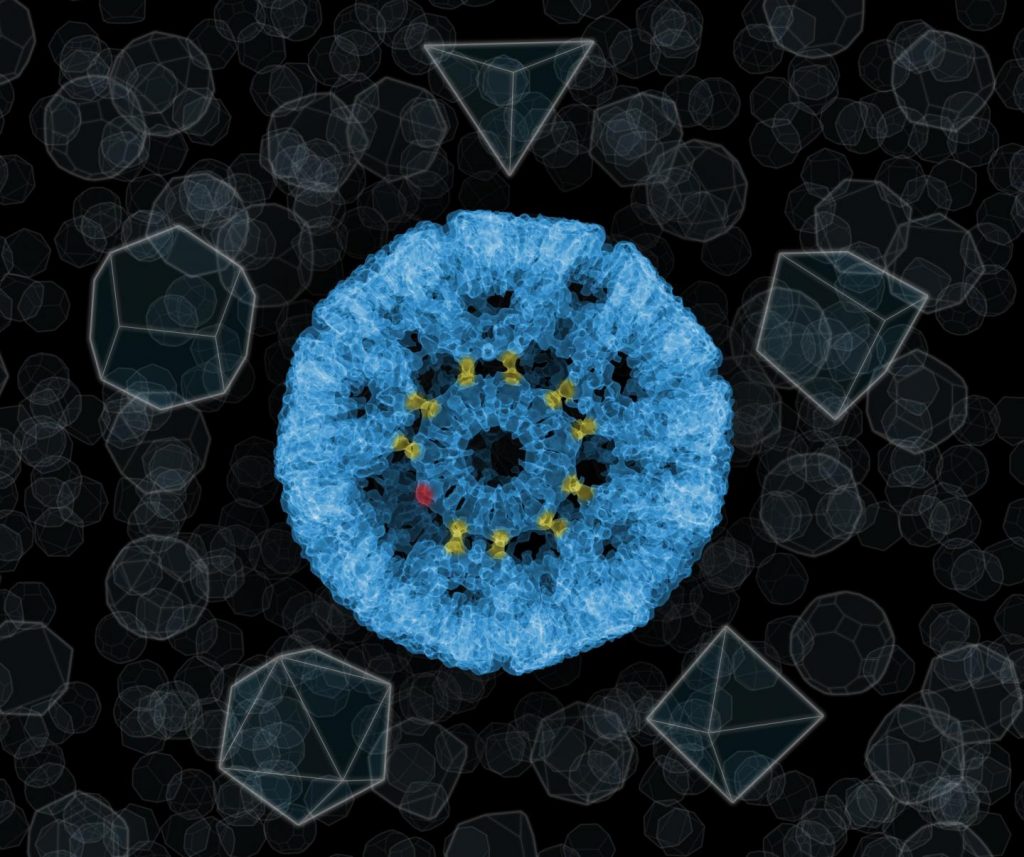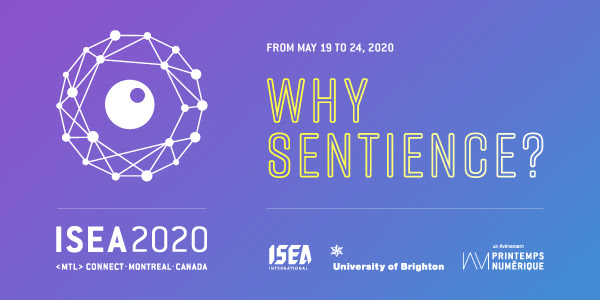Originally, the plan was to produce some sort of a Canadian science culture roundup for 2019 but it came to my attention that 2019 was also an end-of-decade year (sometimes I miss the obvious). I’ll do my best to make this snappy but it is a review (more or less) of the last 10 years (roughly) and with regard to science culture in Canada, I’m giving the term a wide interpretation while avoiding (for the most part) mention of traditional science communication/outreach efforts such as university rresearch, academic publishing, academic conferences, and the like.
Since writing that opening paragraph in late December 2019, COVID-19 took over the world and this review seemed irrelevant for a while but as time passed, Iit occurred to me it might serve as a reminder of past good times and as a hope for the future.
Having started this blog in 2008, I’ve had the good fortune to observe a big increase in the number and range of science outreach/communication/culture initiatives, projects, festivals, etc. It’s tempting to describe it as an explosion of popular interest but I have no idea if this is true. I spend much of my time searching out and writing up this kind of work in addition to the emerging science and technology that I follow and my perception is most likely skewed by my pursuits. What i can say is that in 2019 there was more of everything to do with science culture/outreach/communication than there was when I started in 2008.
Coincidentally, I wrote a three-part series about science communication (including science outreach/culture projects) in Canada in Sept. 2009, just months before the start of this decade. In retrospect, the series is sprawling everywhere and it looks to me like I was desperately trying to make something look bigger than it actually was.
For anyone who wants to take a trip down memory lane, Science data collection for everybody; science communication in Canada (part 1); writing/art games (September 17, 2009); Science communication in Canada (part 2) (September 18, 2009); and, Science communication in Canada (part 3) (September 21, 2009).
Science communication
I’m looking at the more formal aspects of science communication and so onto mainstream media and education. This is the saddest section but don’t worry it gets better as it goes on.
Mainstream Media
As I note in the following subsection, there are fewer science writers employed by mainstream media, especially in Canada. The only science writer (that I know of) who’s currently employed by a newspaper is Ivan Semeniuk. for the Globe and Mail.
Margaret Munro who was the science writer for PostMedia (publisher of most newspaper dailies in Canada) is now a freelancer. Kate Lunau, a health and science journalist for Maclean’s Magazine (Canada) until 2016 and then Motherboard/VICE (US online publication) until March 2019 now publishes her own newsletter.
Daily Planet, which was a long running science programme (under various names since 1995) on Discovery Channel Canada and which inspired iterations in other countries, was cancelled in 2018 but there is still a Twitter feed being kept up to date and a webpage with access to archived programmes.
The Canadian Broadcasting Corporation (CBC) programmes, Spark for technology and Quirks & Quarks for science on the radio side and the Nature of Things for science, wildlife, and technology on television carry on year after year and decade after decade.
A more recent addition (2019?) to the CBC lineup is a podcast that touches on science and other topics, Tai Asks Why? According to the programme’s About page, the host (Tai Poole) is in grade seven. No podcasts dated after September 2019 have been posted on Tia’s page.
Yes Magazine for children and Seed magazine (for adults) have both died since 2009. On a happier note, Canadian children’s science magazines are easier to find these days either because I got lucky on my search and/or because there are more of them to find.
Thank you to helpwevegotkids.com for their 10 Awesome Magazines for Canadian Kids webpage. First published in 2016, it is updated from time to time, most recently in October 2019 by Heather Camlot; it’s where I found many of these science/technology magazines (Note: I’m not sure how long these magazines have been published but they are all new to me),
- Chickadee Magazine: ages 6-9 ( Every month, the Chickadee team creates a package of interactive stories, puzzles, animal features, and science experiments to educate and entertain readers.) It’s from the folks at owlkids.com
- OWL Magazine: ages 9-13 (… highlight the elements of science and tech, engineering, art and math ) Also from the folks at owlkids.com
- AdventureBox: ages 6 – 9 (… nature with beautiful photographs and fascinating scientific information … Hilarious and adventurous comic-strips, games and quizzes … An audio CD every 2 months) Also from the folks at owlkids.com
- DiscoveryBox: ages 9 – 12 ( … Animals and nature, with spectacular photographs … Fascinating scientific topics, with clear explanations and experiments to carry out …) Also from the folks at owlkids.com BTW, I was not able to find out much about the Owl Kids organization.
- WILD magazine ( … jam-packed with fun wildlife stories, games and pictures for youngsters of all ages. It’s a great way to get the children in your life engaged in nature and share your passion for the outdoors. Published 6 times per year) From the folks at the Canadian Wildlife Federation (enough said).
- Bazoof! (… suited for ages 7-12 … nutrition, personal care, fitness, healthy lifestyles, character development, eco-education—all in a creative and zany style! Filled with short stories, comics, recipes, puzzles, games, crafts, jokes, riddles, pet care, interviews, healthy snacks, sports, true stories, fun facts, prizes and more!) Bazoof! is being brought to you by the team responsible for Zamoof! You might want to read their About page. That’s all I can dig up.
- Brainspace (an augmented reality magazine for kids 8 – 14) As best I can determine they are still ‘publishing’ their interactive magazine but they make finding information about themselves or their organization a little challenging. It’s published in Ontario and its publisher Nicky Middleton had this in her LinkedIn profile: “Publisher of Brainspace interactive magazine for kids 8-12. Creating augmented reality content for teaching resources in partnership with Brock University, District School Board of Niagara.”
One more thing regarding mainstream media
While there are fewer science journalists being employed, there’s still a need for science writing and journalism. The Science Media Centre of Canada (SMCC) opened in 2010 (from its Wikipedia entry),
… to serve journalists with accurate information on scientific matters. The centre has a Research Advisory Panel of 20 Canadian scientists who will make their expertise available in a simple and understandable manner. In order to secure objectivity, the centre has an Editorial Advisory Committee of eight journalists. The centre is bilingual.
As of January 2020, the SMCC is still in operation.
Education
It’s been up and down. Banff Centre (for Arts and Creativity) no longer runs a Science Communication programme in the summer but Laurentian University, which in 2009 seemed to offer a single module for one programme, now offers a Masters of Science Communication or a Science Communication Graduate Diploma.
Mount St. Vincent University in Nova Scotia offers a minor in Science Communication (scroll down). I gather it’s a new minor.
The University of British Columbia’s Journalism School (Vancouver) no longer has a Science Journalism Research Group nor does Concordia University (Montréal) have its Science Journalism Project. I have checked both journalism schools and cannot find any indication there is a science programme or specific science courses of any kind for journalists or other communicators but I didn’t spend a lot of time digging. Interestingly, the chair, David Secko, of Concordia’s journalism programme is a science journalist himself and a member of the Editorial Advisory Committee of the Science Media Centre of Canada.
The lack of science journalism programmes in Canada seems to reflect on overall lack of science journalism. It’s predictable given that the newspapers that once harboured science journalists have trimmed and continue to trim back their staffs.
Miscellaneous
Science centres, museums, and the like are considered part of the informal science community with Makerspaces being a new addition. For the most part, their target audience is children but they are increasingly (since 2010, I believe) offering events aimed at adults. The Canadian Association of Science Centres (CASC) describes itself and its membership this way (from the CASC About Us webpage),
CASC members are a diverse group of organisations that support informal learning of science, technology and nature. Our common bond is that we offer creative programming and exhibitions for visitors that inspire a drive to learn, create, and innovate.
If you are a member of a Science Centres, Museums, Aquariums, Planetariums and Makerspaces [these are a 2010s phenomenon] you could benefit from our reciprocal admission agreement. Not all CASC Members are participants in the Reciprocal Admissions Agreement. Click here for more information.
You can find a full list of their members including the Ingenium museums (the federal consortium of national Canadian science museums), the Saskatchewan Science Centre, the Nunavut Research Institute, Science East, and more, here.
I’m calling what follows ‘truly informal science culture’.
Science: the informal (sometimes cultural) scene
When I first started (this blog) there was one informal science get-together (that I knew of locally) and that was Vancouver Café Scientifque and its monthly events, which are still ongoing. You can find our more about the parent organization, which was started in Leeds, England in 1998. Other Canadian cities listed as having a Café Scientifique: Ottawa, Victoria, Mississauga, and Saskatoon.
Now onto the music, the dance, and more
Sing a song of science
Baba Brinkman is well known for his science raps. The rapper and playwright (from British Columbia) lives in New York City these days with his wife and sometime performance collaborator, neuroscientist Dr. Heather Berlin and their two children (see his Wikipedia entry for more), he is still Canadian (I think).
He got his start rapping science in 2008 when I think he was still living in Vancouver (Canada) after gaining the attention of UK professor Mark Pallen who commissioned him to write a rap about evolution. The Rap Guide to Evolution premiered at the 2009 Edinburgh Fringe Festival. Here’s a video of Brinkman’s latest science rap (Data Science) posted on YouTube on October 21, 2019,
I find this one especially interesting since Brinkman’s mother is the Honourable Joyce Murray, a member of parliament and the Minister of Digital Government in Prime Minister Justin Trudeau’s latest cabinet. (My December 27, 2019 posting highlights what I believe to be the importance of the Minister of Digital Government in the context of the government’s science and technology vision. Scroll down about 25% of the way to the subhead titled “The Minister of Digital Government and a bureaucratic débacle,”) You can find out more about Baba Brinkman here.
Tim Blais of A Capella Science first attracted my notice in 2014 thanks to David Bruggeman and his Pasco Phronesis blog (btw: David, I miss your posts about science and music which are how I found out most of what I know about the Canadian science music scene).
Blais (who has a master’s degree in physics from McGill University in Québec) started producing his musical science videos in 2012. I featured one of his earliest efforts (and one of my favourites, Rolling in the Higgs [Adele parody]) in my July 18, 2014 posting.
You can find his twitter feed here and his A Capella Science YouTube channel here. He seems to be maintaining his twitter feed. He is currently producing music videos inspired by self-isolation and COVID-19. Tim Blais’ Wikipedia entry is here.
Dating back to 2012. The Institute of Quantum Computing at the University of Waterloo held two performances of Quantum: Music at the Frontier of Science. Raymond Laflamme, then director of the institute, wrote a September 20, 2012 article (The Quantum Symphony: A Cultural Entanglement) about the performances. You can see a video (15 mins., 45 secs.,) of the February 2012 performances here.
More recently, the Life Sciences Institute at the University of British Columbia (UBC) hosted a performance of Sounds and Science – Vienna Meets Vancouver in late 2019. I covered it in a November 12, 2019 posting (scroll down to the Sounds and Science subheading). The story about how the series, which has its home base in Vienna, started is fascinating. The sold out Vancouver performance was a combination of music and lecture featuring the Vienna Philharmonic and UBC researchers. According to this Sounds and Science UBC update,
…
For those who missed this exceptional evening, JoyTV and its CARPe Diem show will be producing an episode focusing on the concert, to be aired in February, 2020 [emphasis mine].
…
There is another way to look at musical science and that’s to consider the science of music which is what they do at the Large Interactive Virtual Environment Laboratory (LIVELab) at McMaster University (Hamilton, Ontario, Canada). it’s “a research concert hall. It functions as both a high-tech laboratory and theatre, opening up tremendous opportunities for research and investigation”, you can read more about it in my November 29, 2019 posting.
One last thing, there is data sonification which means finding a way to turn data into music or a sound which can more or less be defined as musical. There may be other data sonification projects and presentations in Canada but these are the ones I’ve tripped across (Note: Some links have bee removed),
- Songs of the Ottawa From the website: “Songs of the Ottawa” is the Master’s Research Project of Cristina Wood, under the co-supervision of Dr. Joanna Dean and Dr. Shawn Graham. She completed her Master’s of Arts in Public History with a Specialization in Digital Humanities at Carleton University in spring 2019. She will continue her explorations of the Ottawa River in the Ph.D. program at York University [fall 2020]. Be in touch with Cristina on Twitter or send an email to hello [at] cristinawood [dot] ca.”
- Flora’s Song No. 1 in C Major From the website: “A collaborative project between artist Laara Cerman (laaracerman.com) and Dr. Scott Pownall (opensciencenet.org). Special thanks to the Curiosity Collider (curiositycollider.org). Exhibited at the Collisions Festival at VIVO Media Arts in Vancouver, BC from November 8 – 10, 2019.”
- The Art of Data Sonification (This January 2019 workshop at Inter/Access in Toronto is over.) From the website: “Learn how to turn data into sound! Dan Tapper will teach participants how to apply different data sonification techniques, collect and produce a variety of sonifications, and how to creatively use these sonifications in their own work. The workshop will move from looking at data sonification through the lens of Dan Tapper’s work sonifying data sets from NASA, to collecting, cleaning and using your own data for artistic creation. Participants will work with pre-gathered and cleaned data sets before collecting and working with personal data and online data sets. Tools will be provided by Tapper created in Pure Data and Processing, as well as versions for Max/MSP users. A particular focus will be placed on how to use data sets and the created sonifications in creative practice – moving beyond quantitative sonic representations to richer material. “
- Sonification: Making Data Sound (This September 2019 workshop at the Peter Wall Institute for Advanced Studies at the University of British Columbia is also over.) From the website: ” Computers and music have been mingling their intimate secrets for over 50 years. These two worlds evolve in tandem, and where they intersect they spawn practices that are entirely novel. One of these is “sonification,” turning raw data into sounds and sonic streams to discover new musical relationships within the dataset. This is similar to data visualization, a strategy that reveals new insights from data when it is made for the eye to perceive as graphs or animations. A key advantage with sonification is sound’s ability to present trends and details simultaneously at multiple time scales, allowing us to absorb and integrate information in the same way we listen to music. In this workshop, Chris Chafe will lead a discussion of the practice and application of sonification in a wide array of disciplines, drawing on his own extensive experience in this field.”
I have been looking for data sonification projects in Canada for years. It’s amazing to me that all of this sprung up in the last year of this decade. If there’s more, please do let me know in the Comments section.
Science blogging in Canada
The big news for the decade was the founding and launch of Science Borealis, a Canadian science blog aggregator in 2013. Assuming I counted right in December 2019, there are 146 blogs. These are not all independent bloggers, many institutional blogs are included. Also, I’m not sure how active some of these blogs are. Regardless, that’s a pretty stunning number especially when I consider that my annual Canadian blog roundup from 2010 -2012 would have boasted 20 – 30 Canadian science blogs at most.
I’m not sure why ASAP Science (Michael Moffit and Gregory Brown) isn’t included on Science Borealis but maybe the science vloggers (video bloggers) prefer to go it alone. or they fit into another category of online science. Regardless, ASAP Science has been around since May 2012 according to their About page. In addition to the science education/information they provide, there’s music, including this Taylor Swift Acapella Parody.
One of the earliest Canadians to create a science blog, Gregor Wolbring, Associate Professor at the University of Calgary’s Cumming School of Medicine, started his in 2006. He has taken a few breaks, 2011 and August 2013 – June 2017 but he’s back at it these days. He is in a sense a progenitor for Canadian science blogging. At one time, his blog was so popular that US researchers included it in their studies on what was then ‘the blogging phenomenon’. His focus academically and on his blog is on rehabilitation and disability. This webpage on his blog is of particular interest to me: FUTUREBODY: The Future of the Body in the Light of Neurotechnology. It’s where he lists papers from himself and his colleagues’ in the ERANET NEURON ELSI/ELSA funded by the European Community. (ELSI is Ethical, Legal and Social Implications and ELSA is Ethical, Legal, and Social Aspects.)
Canada’s Favourite Science Online, a competition co-sponsored by Science Borealia and the Science Writers and Communicators of Canada (SWCC), gives a People’s Choice Award annually in two categories: blog and science site. This September 16, 2019 posting on the Science Borealis blog features the finalists in the categories and a pretty decent sampling of what available online from the Canadian science community.
Science in the City is a Canadian life sciences blog aggregator and job and event listing website. The name is an official mark of McMaster University (Ontario, Canada) and it is used and registered by STEMCELL Technologies Canada Inc. Here’s more from their AboutScienceInTheCity webpage,
As scientists ourselves, we know that science is accelerated by collaboration and connection, but that the busy, demanding lifestyle of a scientist makes this challenging. Thus, we saw the need for a central resource that connects local scientists, provides them with a platform to share their ideas, and helps them stay current with the news, events, and jobs within their local scientific community. This inspired us to launch Science in the City in our hometown of Vancouver, Canada in 2017.
Science in the City is your complete source for all the life science news and events happening in your city. The Science in the City website and weekly newsletter provide researchers and medical professionals with breaking news, in-depth articles, and insightful commentary on what is happening around them. By supplying scientists with a resource for the local news and events that affect them, Science in the City fosters learning and collaboration within scientific communities, ultimately supporting the advancement of science and medicine.
…
Vancouver is our hometown, so it made sense to launch this exciting initiative in our own backyard. But we’re only getting started! We’ve launched Science in the City in Seattle and Boston, and we’re currently working on bringing Science in the City to several more scientific communities across North America and Europe!
….
Do check their event listings as they range past life science to many other interesting ‘sciencish’ get togethers. For example, in early 2020 (in Vancouver) there was,
- January 20, 2020 Between Science and Mythology: The World of Bollywood Science Fiction Film
- January 22, 2020 Nerd Nite v49: Waterslides, Ecology, and Oil Tankers
At a guess their funding comes from STEMCELL Technologies while Science Borealis was originally (not sure what the status is today) bankrolled by Canadian Science Publishing (CSP).
It’s just dance, dance, dance
Ranging from pigeon courtship to superconductivity, Canadian scientists have scored a number of wins in the Dance Your Ph.D. competition founded in 2008 according to its Wikipedia entry and held by Science Magazine and the American Association for the Advancement of Science (AAAS). The contest requires that the entrant dance either as a solo artist or as part of a troupe.
In 2018, a University of Alberta student won in the physics category and then went on to win overall. I covered it in a February 22, 2019 posting. Because I love the video, here is Pramodh Senarath Yapa with his Superconductivity: The Musical!, again,
BTW, John Bohannon who came up with the idea for the contest wrote this February 15, 2019 article about Yapa’s win for Science Magazine.
While searching for other Canadian Dance Your Ph.D. winners, I found some from the 2010 and 2011 contests. (If there are others, please do let me know in the Comments section.)
Maria De Rosa’s lab at Carleton University (Ottawa, Ontario) produced participants in both 2010 and 2011. First, Maureen McKeague won for ‘Selection of a DNA aptamer for homocysteine using systematic evolution of ligands by exponential enrichment (SELEX)‘ in the chemistry category and then won overall in 2010. The next year, Erin McConnell, a member of Maria De Rosa’s lab who’d been part of McKeague’s 2010 winning video, choreographed her own dance video for submission. Her 2011 video, ‘DNA Aptamers as a Tool for Studying Mental Health Disease‘, was one of four finalists in the chemistry division.
McConnell’s video did not win in its division but another Canadian student, Queen’s University (Ontario) biologist, Emma Ware won the 2011 social science division for ‘A Study of Social Interactivity Using Pigeon Courtship‘. For more about McConnell and Ware’s 2011 efforts, you can read Tyler Irving’s October 20, 2011 posting on his eponymous blog. (Side note: Irving is a Canadian science writer who started the blog in 2011 and took a five year hiatus from January 2015 to January 2020.)
Onward dance
Lesley Telford, choreographer and director of Inverso Productions based in Vancouver, seems to have started showing a dance piece inspired by Albert Einstein’s famous description of quantum entanglement as “spooky action from s a distance” in 2017.
I first wrote about it in an April 20, 2017 posting. The title, at that time, was, ‘Three Sets/Relating At A Distance; My tongue, your ear / If / Spooky Action at a Distance (phase 1‘. In 2017, Telford was artist-in-residence at the Dance Centre and TRIUMF, Canada’s national laboratory for particle and nuclear physics and accelerator-based science, both located in Vancouver.
She has continued to work with the concept and most recently her company gave performances of ‘Spooky Action’ in 2019 and will go on tour in 2020 according to her company’s homepage.
Unlike Lesley Telford who has a single science-inspired piece, Blue Ceiling dance in Toronto, is organized around the idea of art (dance) and science according to the company’s About page,
Blue Ceiling dance aims to pierce the soul through investigations at the intersection of art and science, and physical rigour provoked by the imagination. By peering into the mysterious corners of human experience and embodying the natural laws of the universe, we want to inspire empathy and curiosity. Through creation, production, commissioning and touring of new dance and multi-disciplinary works and through the Imaginative Body Classes, Blue Ceiling dance uses the poetry of the body and of scientific language to describe our experience of the world through the lens of poetic naturalism.
Blue Ceiling dance was founded by Lucy Rupert in 2004, as an umbrella for her creative endeavours. …
Premiered in late January 2020, ‘8 minutes 17 seconds‘,
Our biggest project to date premieres January 23-26th, 2020 at The Theatre Centre [Toronto].
Using the length of time it takes light to travel from the Sun to Earth, we launch into 8 overlapping meditations on the physical behaviour of light, the metaphors of astrophysics, and the soul of cosmology, as they brush against a sense of our own mortality. What would you do with your last 8 minutes and 17 seconds before the lights go out?
Choreographed and conceived by Lucy Rupert with additional choreography by Karen Kaeja, Emma Kerson and Jane Alison McKinney, and Michael Caldwell. With text written by Hume Baugh.
The company’s repertoire is diverse and focused largely on science,
Animal Vegetable Mineral is a site-specific work with a naturalist-led hike. Exploring embodiments of each category of matter, the dancers form an ecosystem under stress, and highlight the interconnectedness of all species and our deep need for one another. Audiences explore their local environment and encounter human embodiments in an intimate performance setting.
Originally made for the High Park Nature Centre in Toronto, the piece is adaptable to different ecosystems and environments.
dead reckoning Perplexing, haunting and slightly mischievous, with choreography by Lucy Rupert and international ballet choreographer Peter Quanz. The launching point for this work of dance-theatre is Sir Ernest Shackleton’s ill-fated expedition to Antarctica in 1914 and the mysterious experiences surrounding his life-or-death situation. Three linked dances offer three views of an explorer pursued by an enigmatic “other”.
…
Bye, bye ScienceOnline Vancouver
A ScienceOnline conference and community based in the United States inspired a short-lived but exciting offshoot in Vancouver. With much ado, their first event was held on April 19, 2012. As I recall, by December 2012, it had died.
The volunteers were wildly ambitious and it’s very hard to maintain the level of dynamism and technology they established on their first night. Here’s how I described the first event in my April 20, 2012 posting, ” It was a very technology-heavy event in that there was livestreaming, multiple computers and screens, references to tweeting and Storify, etc.” That’s a lot to do on a regular basis as volunteers. By Christmas 2012, ScienceOnline was gone. It was a great and I’m thankful for it.
Now onto part 2 where you’ll find the visual arts, poetry, festivals, and more.








